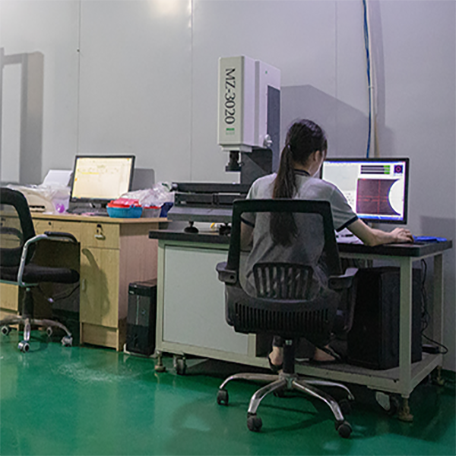Evaluate Manufacturer Reputation and Industry Experience
Assessing Track Record, Client References, and Long-Term Reliability
Looking for a reliable silicone products manufacturer? Go for companies that have been around for about five to seven years with proof they've actually been running operations all that time. Don't just take their word for it when they talk about satisfied customers. Check those testimonials against what others are saying online too. There's something telling about how consistent delivery times are and whether they can actually fix problems when things go wrong. Take note that manufacturers who have ISO 9001 certification tend to handle production hiccups about 34 percent quicker than those without such credentials. And remember to ask for references specifically from people working in similar industries. Medical grade silicone suppliers need to show documentation proving they meet USP Class VI standards, otherwise why trust them with sensitive applications?
Industry-Specific Expertise: Why Niche Experience Matters in Silicone Manufacturing
Specialization directly impacts product success. A manufacturer producing kitchenware silicones may lack the cleanroom protocols needed for biocompatible medical components. Evaluate their portfolio depth:
- Material science expertise: Can they explain peroxide vs. platinum-cure silicone tradeoffs for your application?
- Regulatory fluency: Do they maintain documentation trails required for FDA or EU MDR audits?
Partners serving aerospace or automotive sectors often bring superior precision tolerances (±0.1mm) to consumer product projects.
Case Study: How a Medical Device Company Selected a Trusted Silicone Products Manufacturer
When a company making heart implants switched to a manufacturer with over 15 years working with medical grade materials, they saw their prototype failure rate drop by nearly two thirds. The new supplier spotted problems with the draft angles on catheter tips that other manufacturers just didn't catch. What really made a difference was their ISO 13485 certified facility which kept track of every component all the way from raw silicone through to the finished sterilized product. This kind of complete traceability was something the old vendor simply couldn't provide, and it turned out to be absolutely critical for regulatory compliance and quality control.
Verify Quality Control Processes and Material Standards
Understanding Silicone Grades and Matching Materials to Application Requirements
Silicones come in different grades for different jobs medical grade (USP Class VI), industrial grade, and food grade being the main categories. Good manufacturers know how to match these materials based on what they need to withstand. Temperature ranges matter a lot too some can handle extremes from about -45 degrees Celsius all the way up to around 230 degrees. The hardness level or durometer also varies between roughly 20 and 80 on the Shore A scale depending on application needs. Take aerospace components for example they often need those special UL 94 V-0 flame retardant versions. Meanwhile baby products used in neonatal care must be made with platinum cured silicone that doesn't contain any harmful substances that could affect delicate skin.
Material Safety, Purity, and Consistency in High-Performance Industries
Pharmaceutical and medical manufacturers must verify ISO 10993 biocompatibility certifications and annual USP <661> physicochemical testing. Leading suppliers employ closed-loop systems to prevent airborne particulates (maintaining <100,000 particles/m³ in cleanrooms) and batch-wise traceability via QR-coded material lots.
Quality Testing Protocols, Certifications, and Performance Validation
Rigorous ASTM D1418 compression set testing (<25% deformation after 22 hours at 70°C) and cyclic fatigue validation (50,000+ load cycles) separate qualified suppliers from generic providers. Third-party ISO 17025-accredited labs complement in-house inspections, while ISO 9001:2015 certification signals systemic quality management.
Addressing Gaps in Global Enforcement of Material Claims
Discrepancies in regional standards like China’s GB 4806 vs. FDA 21 CFR 177.2600 create compliance risks. Proactive manufacturers implement third-party verification programs to validate RoHS/REACH compliance documentation and prevent undisclosed filler use; a 2023 study found 12% of Asian-sourced silicones contained 5–15% unauthorized additives.
Ensure Compliance with Regulatory Standards
Choosing a silicone products manufacturer requires rigorous verification of their compliance with industry-specific regulations. Failure to meet these standards can lead to product recalls, legal penalties, and reputational damage.
Meeting food-grade silicone regulations (FDA, EU) for consumer and food industry applications
When it comes to food grade silicone stuff, there are some pretty serious safety rules that manufacturers need to follow. This is especially true for things we put directly in contact with food, like those silicone baking molds everyone loves or those little baby bottles and nipples. Both the FDA over here in the US and their counterparts in Europe have set strict guidelines about how much VOCs these materials can contain. They also want proof that the silicone won't break down when exposed to high oven temperatures during regular use. For reusable containers meant to store food, companies have to do what's called migration testing. Basically they check if any bad chemicals might seep into whatever gets stored inside. According to Global Trade Review stats from last year, around one out of every eight imported batches got rejected because they failed these tests somehow.
Medical-grade silicone and biocompatibility standards (ISO 10993, USP Class VI)
Medical implants and surgical instruments require special grade silicone that has passed ISO 10993 tests for biocompatibility. These tests check if materials are toxic to cells and how they react when inside body tissues over time. The USP Class VI standard is another important mark that shows materials can handle common sterilization processes such as autoclaving without breaking down. According to research published last year, nearly 3 out of 10 medical device production holdups happened because companies didn't have proper biocompatibility records ready. This highlights why having access to certified testing facilities matters so much for manufacturers who want to avoid costly delays during product development.
Essential documentation, audit trails, and traceability for regulated markets
In regulated sectors, companies need detailed records for each batch they produce these days. These records should include where raw materials came from, what happened during production, and all those quality tests we run. Digital audit trails make things much easier because they track every change in real time and cut down on the hassle when auditors come knocking. Take pharma suppliers who've adopted blockchain technology for tracing products through their supply chain some studies show these folks slash compliance review times by around 40% versus old fashioned paper trails according to last year's Manufacturing Compliance Report. And don't forget about keeping those important certifications updated EU MDR requirements or FDA 21 CFR Part 820 whatever applies to your industry will help prove everything runs smoothly when inspectors show up unannounced.
Assess Production Scalability and Operational Flexibility
Evaluating Minimum Order Quantities (MOQ) and Scalability Options
Reliable silicone products manufacturers often employ tiered MOQ structures that balance startup feasibility with volume discounts. Flexible MOQ policies (as low as 500 units for prototyping) allow businesses to test market demand before committing to bulk orders, while scalable tooling designs enable cost-effective production ramp-ups.
Production Capacity Planning for Future Demand Growth
A 2023 operational scalability study by industry leaders found that 62% of manufacturers face bottlenecks when increasing output by ≥30%. Prioritize partners with modular facility layouts and real-time capacity monitoring systems. Manufacturers adhering to operational scalability best practices typically maintain 15–20% buffer capacity to accommodate urgent requests without quality compromises.
Turnaround Times, Delivery Flexibility, and Responsiveness to Volume Changes
Top performers achieve 98% on-time delivery rates even during ±25% demand fluctuations through adaptive scheduling algorithms. Verify contingency plans for raw material shortages silicone supply chain disruptions increased lead times by 40% in 2022 (Global Silicones Council). Manufacturers offering regional warehousing partnerships reduce logistical risks for time-sensitive medical or aerospace applications.
Review Customization Support and Collaborative Engineering
Prototyping and Pilot Production for Design Validation
Silicone makers are speeding up their product creation by constantly building and testing prototypes. According to a recent report from the Journal of Medical Device Design (2023), about seven out of ten engineering teams saw roughly forty percent fewer mistakes in their designs after switching to 3D printed models. Before full scale manufacturing begins, companies run small production batches to check if everything works as planned. These test runs let them put components through their paces in actual working environments, which matters a lot for medical devices that need to be safe inside the body or function properly at very high or low temperatures. This kind of thorough testing has become standard practice across the industry.
Custom Mold Design, Tooling Flexibility, and DFM Integration
Getting good results from collaboration really depends on whether manufacturers apply Design for Manufacturability (DFM) concepts when developing molds. According to the latest data from the 2024 Silicone Manufacturing Benchmark, companies at the top of their game see production ramp ups that are around 30% quicker simply because they get things right from the start with proper gate placement, effective venting systems, and well thought out ejection mechanisms. Another big plus comes from using modular tooling approaches which makes switching materials much more affordable. This matters especially when working on products that need FDA approved silicones or other specialized polymers where costs can quickly spiral out of control if flexibility isn't built into the design process from day one.
Aligning Communication Practices and Project Timelines With Business Goals
Projects with structured collaboration frameworks are 2.3× more likely to meet launch deadlines (PMI, 2023). Prioritize partners offering weekly engineering syncs, real-time order tracking portals, and escalation protocols for design adjustments. Shared digital workspaces and milestone-based deliverables ensure alignment across geographically dispersed teams.
FAQ
What should I look for in a silicone products manufacturer? Reliable manufacturers should have at least five to seven years of consistent operational history, ISO certifications, and client references from similar industries.
Why is niche experience important in silicone manufacturing? Manufacturers specializing in specific sectors possess the necessary expertise, such as suitable cleanroom protocols, material science knowledge, and regulatory fluency to ensure product success.
What are the key compliance standards for food-grade and medical-grade silicones? Food-grade silicone must meet FDA and EU standards, while medical-grade silicone needs to pass ISO 10993 and USP Class VI tests for biocompatibility.
How can manufacturers ensure quality control? Rigorous testing protocols such as ISO certifications and ASTM tests along with robust audit trails contribute to effective quality control processes.

